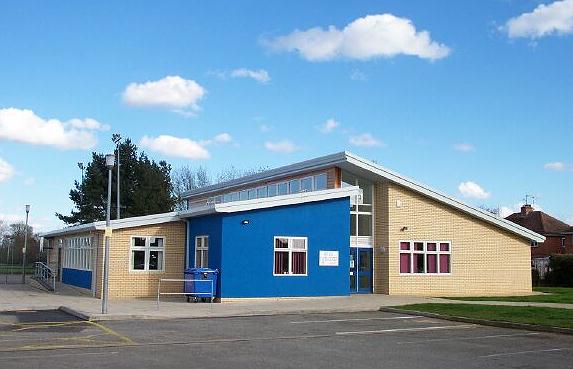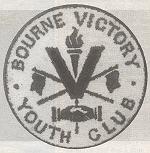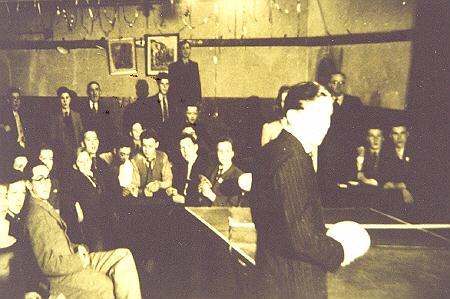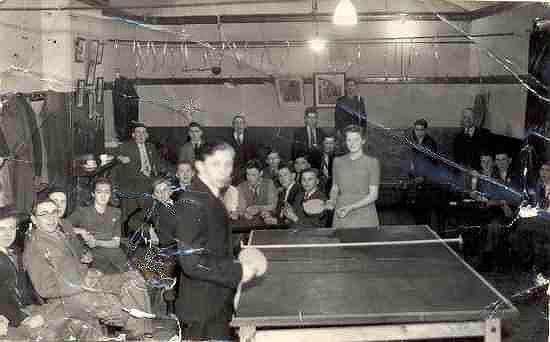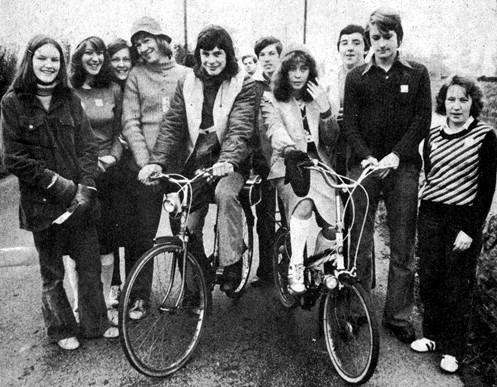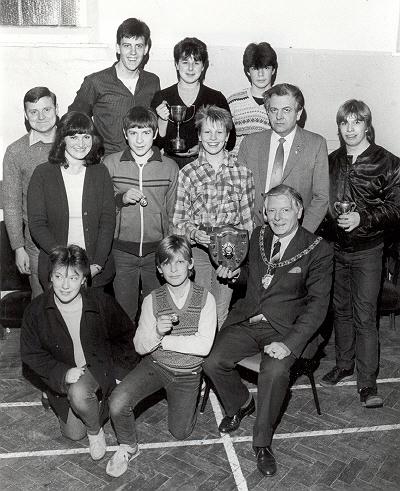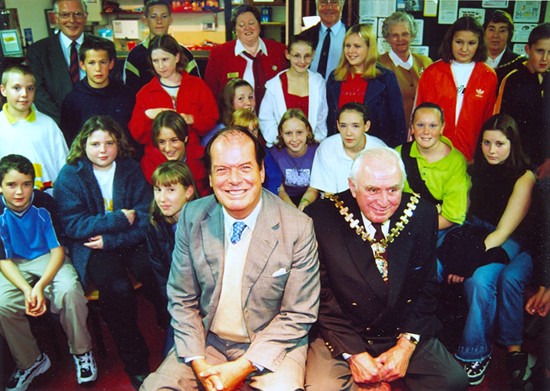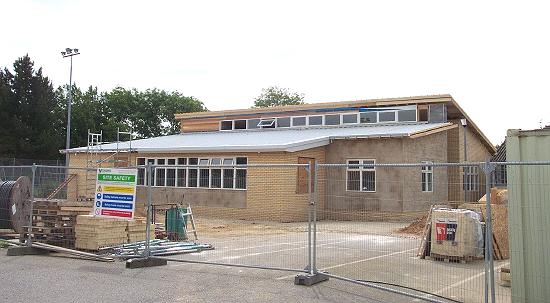|
Bourne Youth Centre
The founding
of the Standing Conference of National Voluntary Youth Organisations in
1936 was a landmark in the strengthening of the voluntary principle of
youth work in Britain. The impetus of establishing a new Britain with benefits for all which followed the end of the war in 1945 resulted in the formation of the Bourne Victory Youth Club which met at the Victoria Hall in Spalding Road [demolished in April 1967] but surprisingly it foundered after a few years through lack of support. There was a resurgence of interest, mainly from the local political organisations, and both the Conservative and Labour parties started youth clubs with the object of attracting young people, but youngsters wanting something to do rather than a political ideology often joined both to take advantage of the leisure facilities they offered. Yet another attempt was made in 1961 with the opening of the Under 21 Club and although it initially attracted 60 members, interest flagged and that too closed down within a year.
Poor organisation and a lack of support from outside
bodies were blamed for these closures but the need for a youth club in the
town remained and the following year, Bourne Urban District Council, under
the chairmanship of Councillor Dr John Galletly, decided that a new club
should be launched with the official support of both the urban and county
authorities. Miss Hursey was anxious to dispel the wrong impression that many people had about a youth club and she told the meeting that it was not an extension of the evening institute, nor should it be assumed that it was a cheap dance hall. "It is a place where those coming to terms with life can become aware of themselves as members of society and where they can be encouraged to take their part in the other activities of the town", she said. "It would not be isolated from the town but would form an integral part of the community." The chairman, Councillor H G Astley, stressed the need for an open youth club to be established in Bourne after several previous attempts had failed. There were, he said, many examples of people from the town who could not have made their names in different spheres without the help and guidance that a youth club could give, including Philip Romaine, the athlete with international and possibly Olympic possibilities who had to go to Spalding to obtain the facilities he needed, and Peter Grummitt, the Nottingham Forest goalkeeper who had no local assistance whatsoever apart from that given to him by Bourne Town Football Club. He added: "There might be youngsters of talent waiting to be discovered and a youth club could be an important medium in guiding and helping that talent to fruition apart from influencing for good the lives of many youngsters just venturing out into life." Even then, there was opposition from Councillor E J Grieves, representing the Chamber of Trade, who said that his members were opposed to spending public money in this way. He suggested that Bourne with a population of 5,000 had far more amenities than any other town of its size, mainly through the activities of the Charity Trustees, and the spending of £20,000 on a new club with a proposed attendance of 120 members per night was a figure impossible to maintain. "We feel that the effort would fall by the wayside after being a great success for the first three months", he said. Figures presented to the meeting by Mr D A Spink, the county youth service officer, showed that there were 586 people in Bourne aged from 14 to 20 and of these, only 80 were members of existing youth groups and assuming that only one in three of the remainder used the new club there was a potential membership of 200. A total of 23 volunteers who attended the meeting offered their services if a new youth club were formed. "This is the largest meeting of any so far called to form such a club", said Councillor Grieves. "If this evident enthusiasm is maintained, we will have a club second to none in the county." As a result of the meeting, Kesteven County Council recognised the need for an
organised youth service and began recruiting officers to run them on a
part-time basis, the first being Graham Luesby, then aged 30, who was
selected for a two-year training course. This consisted of a series of
weekend and evening sessions on management, leisure and sporting
activities and administration, and he became the first qualified youth
leader in Bourne. Mr Luesby was succeeded by Derek Glover and by 1972, the club was flourishing and he presented a most favourable report to the annual meeting. "We are continuing to make good headway and last year was our best ever," he said, "particularly in the field of sport." Among the successes, they had won the county rounders tournament and were currently selecting 16 players for the county badminton team.
The club later moved to the Congregational [now the United Reformed] Church hall in Eastgate and in 1977 it was granted a lease of the Vestry Hall in North Street, then owned by Bourne United Charities, although it was in a dilapidated condition. The average nightly attendance at this time was 40 but members faced an uphill financial struggle to bring the premises up to standard in order that public events could be held there and fund raising immediately began for the money needed to upgrade the fire precautions, toilet facilities and improvements to the building itself although the £20,000 required appeared to be an impossible sum, despite generous donations and the prospect of local authority grant aid. This was achieved largely through the efforts of the Mayor of Bourne, Councillor Ron Alexander, who persuaded Lincolnshire County Council to help fund the extensions which enabled the club to add a kitchen, an outside area to sit and toilets, so ending the practice of members using those in the bus station across the road. The improvements
enabled the club remain at the Vestry Hall until
1986 when it was offered a row of old prefabricated huts in the grounds of the Robert
Manning Secondary School (now the Robert Manning College) where
it remained for the next eighteen years, changing its name to Bourne Youth Centre. The huts had been erected as
temporary classrooms in 1946 after class sizes at local schools increased
due to a raising of the school leaving age and were known as a HORSA
building - Huts Occasioned by the Raising of the School Leaving Age. They
were later replaced by a new teaching block and although they lasted the years well, by the end of the century
when the youth club was in occupation, they were in a poor condition and needed replacing. As they deteriorated,
it became a continual struggle to comply with the health and safety
regulations and soon the roof and the heating system were in need of
urgent attention and it was decided that remedial work would be too costly
and total replacement was the only option. In November 2004, the youth centre held its first members' forum, a discussion allowing all users to express their thoughts and opinions. The guest speaker was Councillor John Kirkman, who represents the Bourne Abbey division on Lincolnshire County Council, and he promised to attend future forums that are to be held on a regular basis. The success of the centre seems assured. "The reaction has been immense and youngsters have been flocking in to see what we have to offer", said Dave Gosney. "The children feel proud of their youth centre already. It is as though Christmas has come early." An official opening was held in March 2005 when a plaque was unveiled by Councillor Ian Croft, the member for Bourne Castle on Lincolnshire County Council. "It is a very smart new base for the youngsters", he said. "They are already caring for it and there has been an increased attendance since it opened. It is long overdue and the former building can only be described as a shed and certainly not built for use as a youth centre."
See also The demolition of the old youth centre Happy Days
Go to: Main Index Villages Index
|
|||||||||||
